Your cart is currently empty!
Tag: Advancements

AI Advancements: A Deep Dive into NVIDIA’s Cutting-Edge Technology
Artificial intelligence (AI) has been a hot topic in technology for the past few years, with advancements being made at a rapid pace. One company at the forefront of these advancements is NVIDIA, a leading designer of graphics processing units (GPUs) for gaming, professional visualization, data center, and automotive markets.NVIDIA has been heavily investing in AI research and development, and their cutting-edge technology is pushing the boundaries of what is possible with AI. One of the key areas where NVIDIA has made significant advancements is in deep learning, a subfield of AI that focuses on training machines to learn from data. NVIDIA’s GPUs are well-suited for deep learning tasks due to their parallel processing capabilities, which allow them to handle large amounts of data and complex algorithms with ease.
One of the most impressive advancements that NVIDIA has made in deep learning is the development of their Tensor Cores, a specialized processing unit designed specifically for deep learning tasks. These Tensor Cores can perform matrix multiplications at incredibly high speeds, allowing for faster training of deep neural networks and more efficient processing of AI tasks.
Another key technology that NVIDIA has been working on is their Deep Learning Super Sampling (DLSS) technology, which uses AI to upscale lower-resolution images to higher resolutions in real-time. This technology has been widely praised for its ability to improve image quality and performance in video games, and has the potential to revolutionize the way virtual reality and augmented reality applications are developed.
NVIDIA has also been pushing the boundaries of AI in the data center with their DGX systems, which are purpose-built AI supercomputers that are designed to handle the most demanding AI workloads. These systems are equipped with multiple GPUs and are optimized for deep learning tasks, making them ideal for training complex neural networks and running AI applications at scale.
In addition to their hardware advancements, NVIDIA has also been investing heavily in software development to support AI applications. They offer a range of software tools and frameworks, such as CUDA, cuDNN, and TensorRT, that are designed to accelerate AI development and deployment on NVIDIA GPUs.
Overall, NVIDIA’s cutting-edge technology in AI is helping to drive innovation and progress in the field, and their advancements are likely to have a significant impact on the future of AI research and development. As AI continues to evolve and become more integrated into our daily lives, companies like NVIDIA will play a key role in shaping the future of technology.
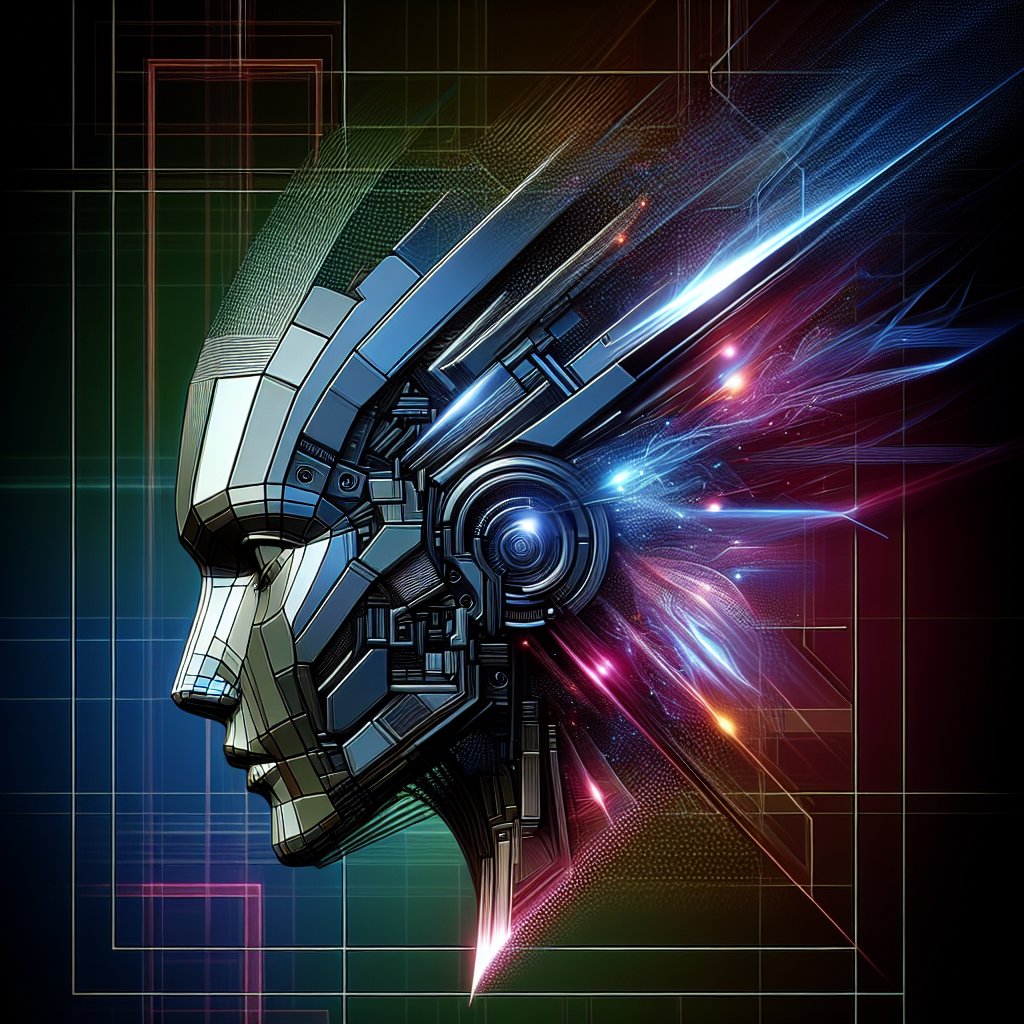
Advancements in Read-Write Head Technology: What the Future Holds
As technology continues to evolve at a rapid pace, advancements in read-write head technology have become crucial for the continued improvement of data storage devices. From hard drives to solid-state drives, read-write heads play a crucial role in the speed and efficiency of data access and retrieval. With the increasing demand for faster and more reliable storage solutions, researchers and engineers are constantly developing new technologies to push the boundaries of what is possible.One of the most significant advancements in read-write head technology is the development of heat-assisted magnetic recording (HAMR). HAMR technology uses a laser to heat the magnetic material on the disk, allowing for much higher data density than traditional magnetic recording methods. This allows for significantly higher storage capacities on hard drives while maintaining fast access speeds.
Another promising development in read-write head technology is the use of spintronics, which leverages the spin of electrons to store and retrieve data. Spintronics-based read-write heads have the potential to significantly increase data transfer speeds and reduce power consumption in storage devices. This technology is still in the early stages of development but holds great promise for the future of data storage.
In addition to these breakthrough technologies, researchers are also exploring new materials and designs for read-write heads to further improve their performance. For example, the use of advanced materials such as graphene and carbon nanotubes can help increase the durability and efficiency of read-write heads, leading to longer-lasting and more reliable storage devices.
Looking ahead, the future of read-write head technology holds exciting possibilities. As data storage needs continue to grow exponentially, researchers will need to innovate and develop new technologies to keep up with demand. From HAMR to spintronics and beyond, the possibilities for advancements in read-write head technology are endless.
Overall, advancements in read-write head technology are essential for the continued evolution of data storage devices. With the development of new technologies and materials, the future holds great promise for faster, more efficient, and higher-capacity storage solutions. As researchers continue to push the boundaries of what is possible, we can expect to see even more exciting developments in read-write head technology in the years to come.
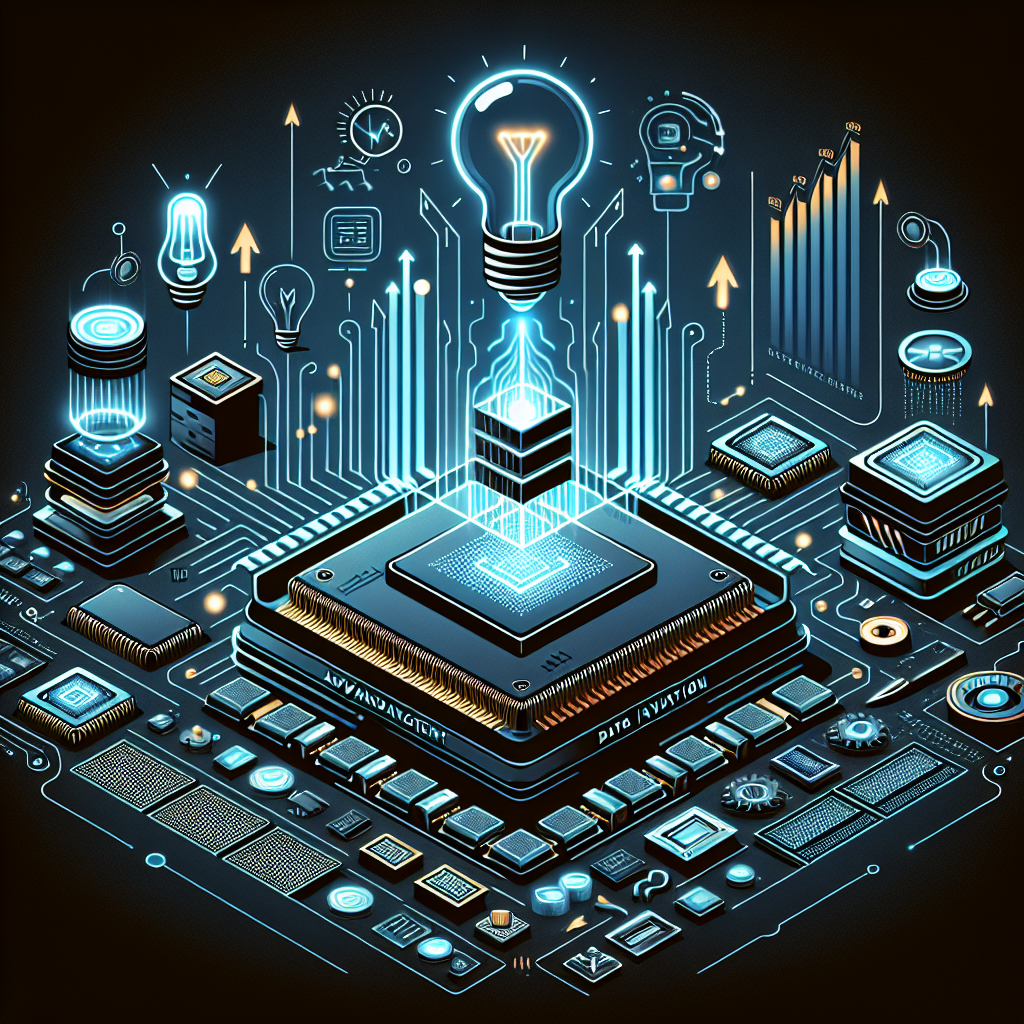
The Future of NAND Flash: Advancements and Innovations
NAND flash memory technology has come a long way since its introduction in the late 1980s. Originally developed by Toshiba, NAND flash has become the dominant form of non-volatile memory in the world, used in a wide range of electronic devices such as smartphones, tablets, and solid-state drives (SSDs). As technology continues to advance at a rapid pace, the future of NAND flash looks brighter than ever with new advancements and innovations on the horizon.One of the most notable advancements in NAND flash technology is the development of 3D NAND, also known as vertical NAND. Traditional NAND flash memory stores data in a two-dimensional plane, but 3D NAND stacks memory cells vertically to increase storage density and reduce production costs. This technology allows for higher capacities and faster read and write speeds, making it ideal for applications that require large amounts of data storage.
Another key innovation in NAND flash technology is the introduction of quad-level cell (QLC) NAND. QLC NAND stores four bits of data per cell, compared to the traditional single-level cell (SLC) or multi-level cell (MLC) NAND which store one or two bits per cell, respectively. While QLC NAND offers higher storage capacities at a lower cost, it also has slower read and write speeds and a shorter lifespan. However, ongoing research and development efforts are focused on improving the performance and reliability of QLC NAND to make it a viable option for a wider range of applications.
In addition to advancements in NAND flash technology, innovations in memory controllers and error correction algorithms are also contributing to the future of NAND flash. Memory controllers play a crucial role in managing data transfers and optimizing performance, while error correction algorithms help to ensure data integrity and reliability. By improving these components, manufacturers can enhance the overall performance and durability of NAND flash memory, making it more suitable for demanding applications such as artificial intelligence, virtual reality, and autonomous vehicles.
Looking ahead, the future of NAND flash technology is likely to be shaped by further advancements in 3D NAND, QLC NAND, memory controllers, and error correction algorithms. These innovations will enable higher capacities, faster speeds, and improved reliability, making NAND flash memory an essential component of the digital world. As the demand for data storage continues to grow, NAND flash technology will play a key role in meeting the needs of consumers and businesses alike.
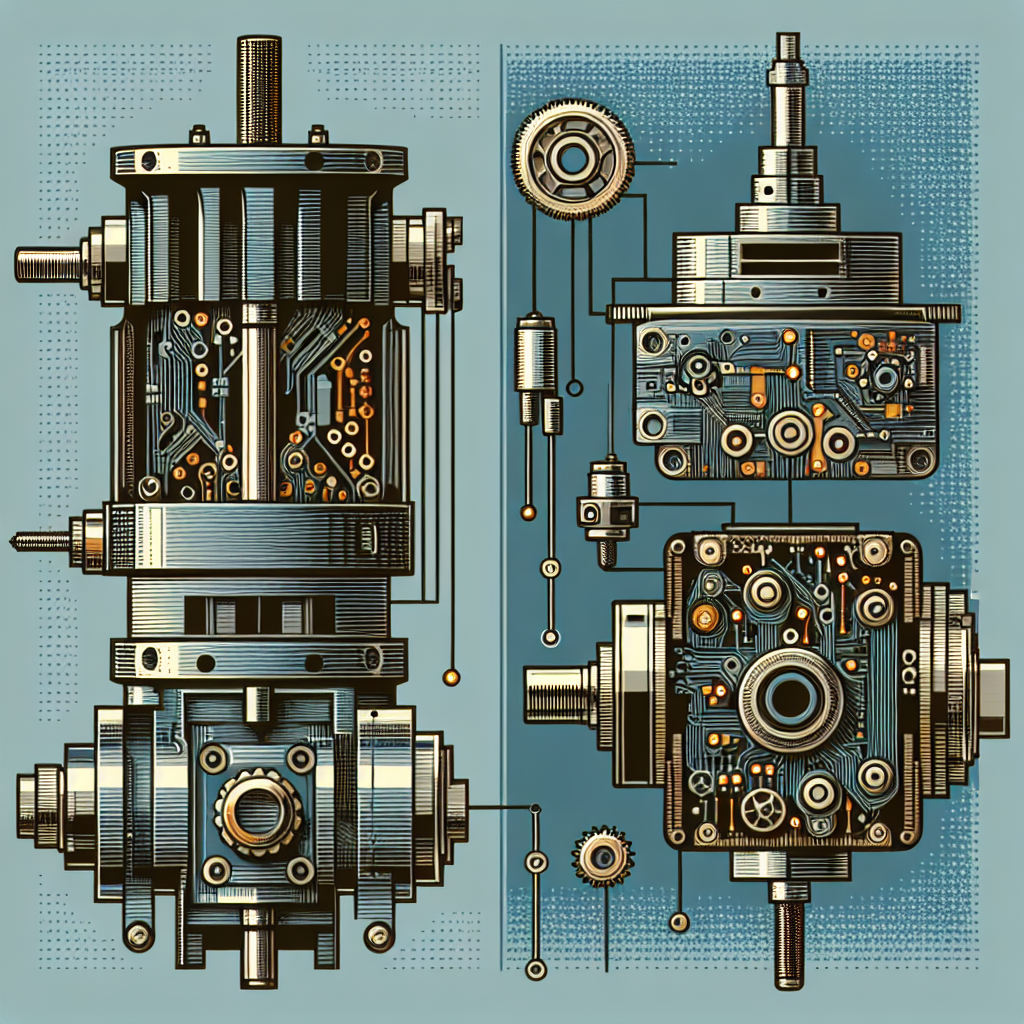
Advancements in Spindle Motor Technology: What You Need to Know
Spindle motor technology has come a long way in recent years, with advancements that have greatly improved the performance and efficiency of these crucial components in various industries. If you are in the market for a spindle motor, it’s important to understand the latest developments in order to make the best choice for your needs.One of the key advancements in spindle motor technology is the development of high-speed motors. These motors are capable of spinning at much faster speeds than traditional motors, allowing for more efficient cutting and machining processes. This can result in higher productivity and lower operating costs for businesses that rely on spindle motors for their operations.
Another important advancement is the development of more compact and lightweight spindle motors. This makes them easier to install and integrate into existing machinery, as well as more portable for use in mobile applications. Additionally, these smaller motors often require less maintenance and consume less energy, leading to cost savings over time.
In terms of precision and accuracy, advancements in spindle motor technology have led to motors that are more stable and consistent in their performance. This is crucial for industries such as aerospace and medical manufacturing, where even the slightest deviation in cutting or machining can have serious consequences. These improved motors can deliver more precise results, leading to higher quality products and fewer defects.
Furthermore, advancements in spindle motor technology have also led to motors that are more durable and reliable. This means less downtime for maintenance and repairs, as well as extended lifespan for the motors themselves. This can result in significant cost savings for businesses that rely on spindle motors for their daily operations.
In conclusion, keeping up-to-date with the latest advancements in spindle motor technology is crucial for businesses looking to improve their efficiency, productivity, and overall performance. By understanding these advancements and choosing the right spindle motor for your specific needs, you can ensure that your operations run smoothly and effectively. So, whether you are in the market for a new spindle motor or looking to upgrade your existing equipment, be sure to consider the latest advancements in spindle motor technology.
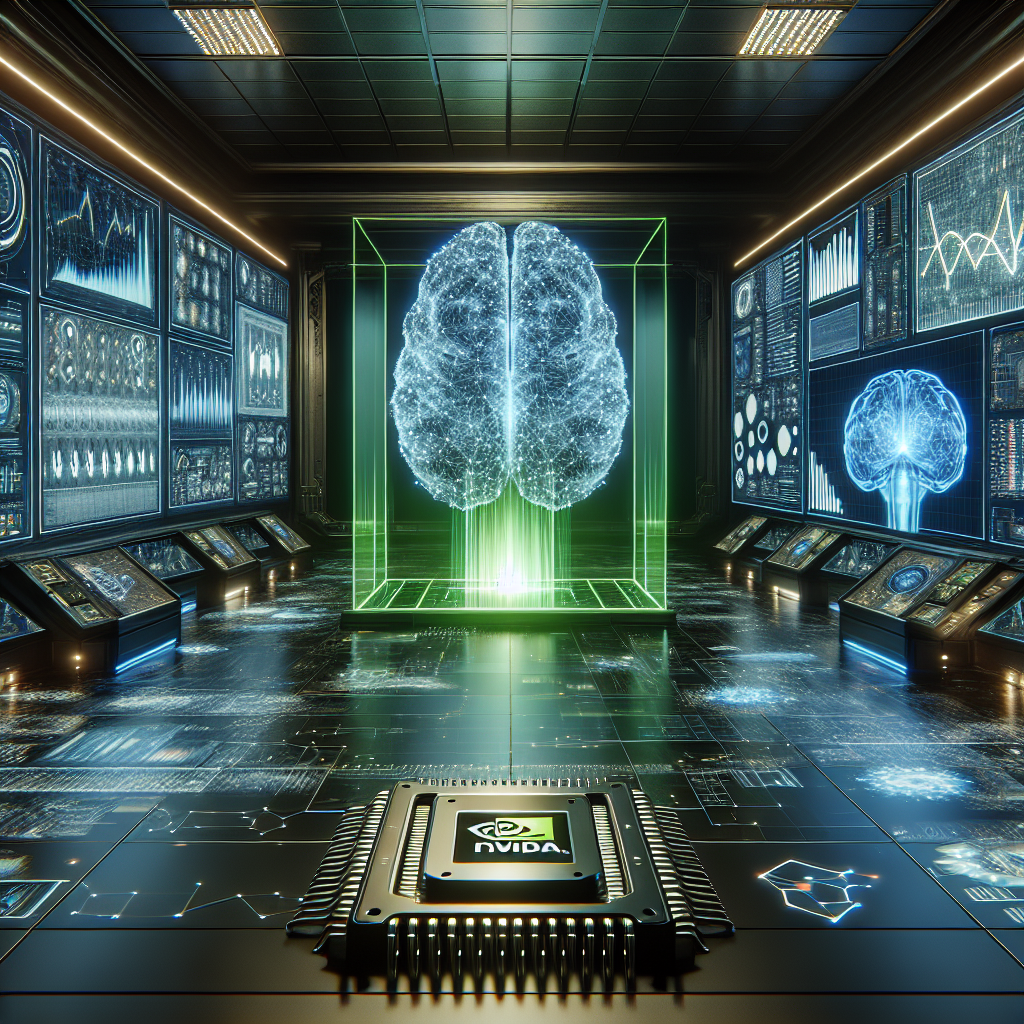
Advancements in Deep Learning: A Closer Look at NVIDIA’s Contributions
Deep learning is a cutting-edge technology that has revolutionized industries such as healthcare, finance, and autonomous vehicles. NVIDIA, a leading technology company, has been at the forefront of advancements in deep learning, developing powerful hardware and software solutions that have enabled researchers and developers to push the boundaries of artificial intelligence.NVIDIA’s contributions to deep learning can be seen in their development of GPUs (graphics processing units) specifically designed for deep learning tasks. These GPUs are powerful parallel processors that excel at handling the complex calculations required for deep learning algorithms. By utilizing GPUs, researchers and developers are able to train deep learning models faster and more efficiently than ever before.
In addition to hardware advancements, NVIDIA has also made significant contributions to the software side of deep learning. The company has developed CUDA, a parallel computing platform that allows developers to harness the power of GPUs for deep learning tasks. CUDA has become a widely used tool in the deep learning community, enabling researchers to accelerate their work and achieve breakthrough results.
NVIDIA has also developed deep learning frameworks such as cuDNN and TensorRT, which provide optimized libraries for deep learning tasks. These frameworks make it easier for developers to build and deploy deep learning models, reducing the time and effort required to bring innovative AI solutions to market.
One of NVIDIA’s most notable contributions to deep learning is their work on generative adversarial networks (GANs). GANs are a type of deep learning model that consists of two neural networks – a generator and a discriminator – that work together to generate realistic images, videos, or text. NVIDIA has made significant advancements in GAN technology, leading to the creation of stunningly realistic images and videos that were previously impossible to generate with traditional deep learning methods.
Overall, NVIDIA’s contributions to deep learning have been instrumental in driving innovation in the field. Their powerful hardware and software solutions have enabled researchers and developers to push the boundaries of what is possible with artificial intelligence, leading to groundbreaking advancements in areas such as image recognition, natural language processing, and autonomous driving.
As deep learning continues to evolve, NVIDIA’s commitment to advancing the field will undoubtedly play a crucial role in shaping the future of artificial intelligence. By providing researchers and developers with the tools they need to push the boundaries of what is possible with deep learning, NVIDIA is helping to unlock the full potential of AI and revolutionize industries across the globe.

Advancements in AI Computing: NVIDIA’s Contributions to the Field
In recent years, advancements in artificial intelligence (AI) computing have revolutionized the way we live and work. One company that has played a crucial role in pushing the boundaries of AI technology is NVIDIA. From developing powerful GPUs to creating specialized software frameworks, NVIDIA has been at the forefront of AI computing innovation.NVIDIA’s journey into AI computing began with the development of its graphics processing units (GPUs), which are known for their parallel processing capabilities. These GPUs are well-suited for running complex AI algorithms, as they can handle massive amounts of data in parallel, leading to faster processing speeds and improved performance. As a result, NVIDIA GPUs have become the go-to choice for researchers and developers working on AI projects.
One of NVIDIA’s most significant contributions to the field of AI computing is the creation of the CUDA parallel computing platform. CUDA allows developers to harness the power of NVIDIA GPUs for general-purpose computing tasks, including AI and machine learning. This platform has enabled researchers to develop and train more sophisticated AI models, leading to breakthroughs in areas such as natural language processing, computer vision, and autonomous driving.
In addition to hardware advancements, NVIDIA has also developed software frameworks that make it easier for developers to build and deploy AI applications. One notable example is the NVIDIA Deep Learning SDK, which provides tools and libraries for training deep neural networks. The company has also released CUDA-accelerated libraries for popular AI frameworks like TensorFlow and PyTorch, making it easier for developers to leverage NVIDIA GPUs for AI tasks.
NVIDIA’s contributions to AI computing have had a profound impact on a wide range of industries. In healthcare, NVIDIA GPUs are being used to analyze medical images and assist in diagnosing diseases. In finance, AI algorithms powered by NVIDIA technology are being used to detect fraudulent transactions and optimize trading strategies. In transportation, NVIDIA’s AI solutions are helping to improve the safety and efficiency of autonomous vehicles.
Looking ahead, NVIDIA continues to push the boundaries of AI computing with the development of new technologies such as the NVIDIA Ampere architecture and the NVIDIA AI Enterprise software suite. These advancements promise to further accelerate AI innovation and drive new breakthroughs in areas such as natural language understanding, robotics, and personalized healthcare.
In conclusion, NVIDIA’s contributions to the field of AI computing have been instrumental in advancing the state-of-the-art in artificial intelligence. By developing powerful GPUs, software frameworks, and specialized AI solutions, NVIDIA has enabled researchers and developers to tackle some of the most challenging problems in AI. With continued investment in AI research and development, NVIDIA is poised to shape the future of AI computing for years to come.
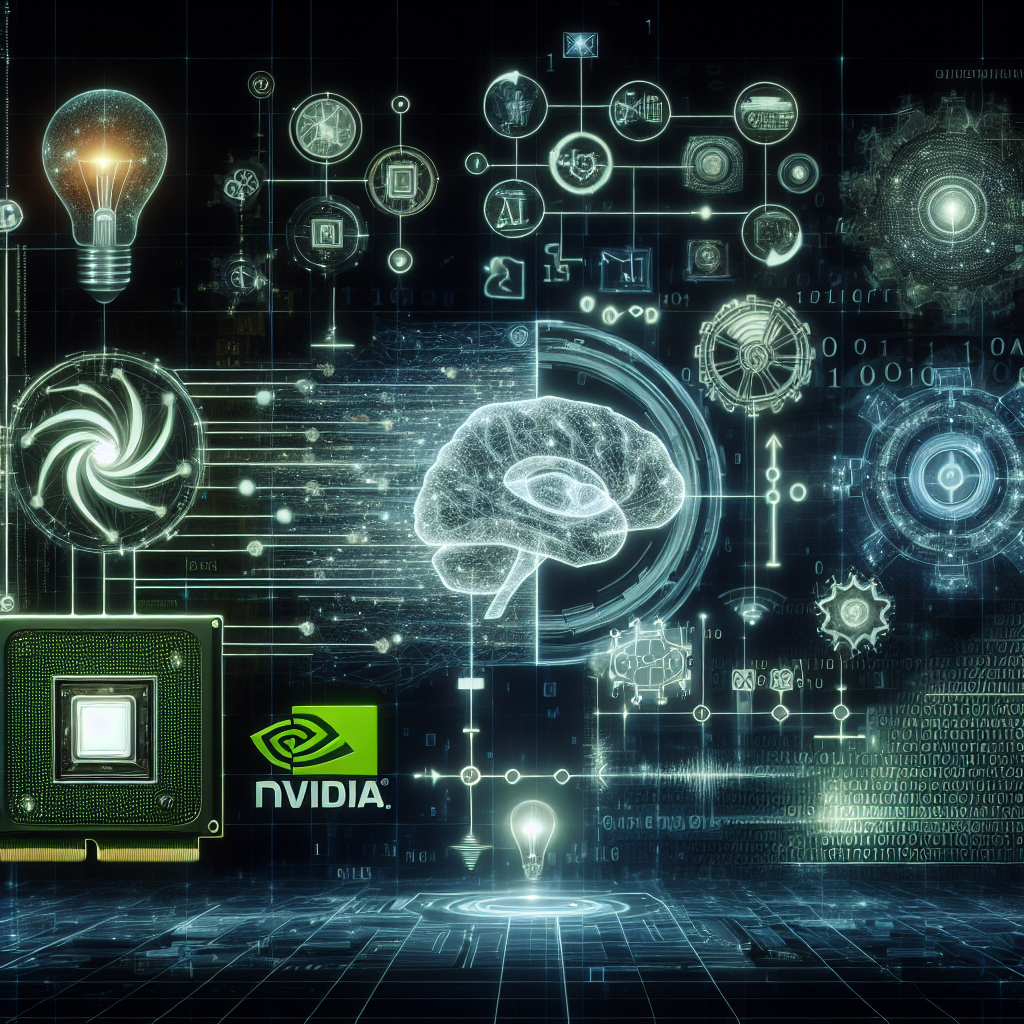
The Future of AI: NVIDIA’s Role in Driving Innovation and Advancements
Artificial Intelligence (AI) has been a hot topic in the tech world for the past few years, with companies like NVIDIA playing a key role in driving innovation and advancements in this rapidly evolving field. NVIDIA, a leading provider of GPUs for gaming and professional applications, has also made significant strides in AI technology, positioning itself as a major player in the development of AI solutions for a wide range of industries.One of NVIDIA’s key contributions to the advancement of AI is its development of powerful GPUs that are specifically designed for AI and machine learning applications. These GPUs are able to process large amounts of data at high speeds, making them ideal for training deep learning models and running complex AI algorithms. By providing hardware that is optimized for AI workloads, NVIDIA has helped to accelerate the development of AI technologies and make them more accessible to a wider range of users.
In addition to its hardware offerings, NVIDIA has also been actively involved in the development of software tools and frameworks that make it easier for developers to build and deploy AI applications. One of the company’s most popular tools is CUDA, a parallel computing platform that enables developers to harness the power of NVIDIA GPUs for a wide range of applications, including AI and machine learning. NVIDIA also offers libraries and frameworks like cuDNN and TensorRT, which provide optimized implementations of popular AI algorithms and make it easier for developers to build high-performance AI applications.
NVIDIA’s efforts in the field of AI have not gone unnoticed, with the company receiving widespread recognition for its contributions to the advancement of AI technology. In 2017, NVIDIA was awarded the prestigious IEEE Corporate Innovation Award for its work in developing GPUs for AI applications, highlighting the company’s commitment to driving innovation in this rapidly evolving field.
Looking to the future, NVIDIA’s role in driving innovation and advancements in AI is likely to continue to grow. As AI technologies become increasingly integrated into a wide range of industries, from healthcare to autonomous vehicles, the demand for powerful hardware and software solutions will only continue to increase. NVIDIA’s expertise in developing GPUs and software tools for AI applications positions the company as a key player in the development of AI technologies, and its ongoing investments in research and development are likely to yield even more groundbreaking advancements in the years to come.
In conclusion, NVIDIA’s role in driving innovation and advancements in AI is undeniable. Through its development of powerful GPUs and software tools for AI applications, the company has played a key role in accelerating the development of AI technologies and making them more accessible to a wider range of users. As AI continues to evolve and become increasingly integrated into a wide range of industries, NVIDIA’s contributions to the field are poised to have a lasting impact on the future of AI technology.

The Future of High-Performance Computing: Advancements and Innovations
High-performance computing (HPC) has come a long way in recent years, with advancements and innovations pushing the boundaries of what is possible in terms of processing power and speed. As we look towards the future of HPC, it is clear that there are exciting developments on the horizon that promise to revolutionize the way we use and interact with technology.One of the key advancements in HPC is the move towards exascale computing, which refers to systems capable of performing a quintillion (10^18) calculations per second. This level of processing power has the potential to revolutionize a wide range of industries, from healthcare and finance to climate modeling and artificial intelligence. Researchers are currently working on developing exascale computers that will be capable of handling the massive amounts of data generated by these industries, opening up new possibilities for innovation and discovery.
Another area of innovation in HPC is the development of quantum computing. Quantum computers leverage the principles of quantum mechanics to perform calculations at speeds that far surpass traditional computers. While still in the early stages of development, quantum computing has the potential to revolutionize fields such as cryptography, material science, and drug discovery. Companies like IBM, Google, and Microsoft are investing heavily in quantum computing research, with the goal of creating practical, scalable quantum computers in the near future.
Advancements in hardware, such as the development of new processors and memory technologies, are also driving the future of HPC. Companies like Intel, AMD, and NVIDIA are constantly pushing the boundaries of what is possible in terms of processing power and energy efficiency. New technologies like neuromorphic computing, which mimics the structure and function of the human brain, are also being explored as a way to further increase the capabilities of HPC systems.
In addition to hardware innovations, advancements in software are also playing a key role in shaping the future of HPC. Researchers are developing new algorithms and applications that are optimized for parallel processing, enabling HPC systems to handle increasingly complex tasks with greater efficiency. Machine learning and artificial intelligence techniques are also being integrated into HPC systems, allowing for more intelligent and autonomous decision-making.
As we look towards the future of high-performance computing, it is clear that there are exciting advancements and innovations on the horizon that promise to revolutionize the way we use and interact with technology. From exascale computing and quantum computing to advancements in hardware and software, the future of HPC is bright and full of possibilities. Researchers, engineers, and industry leaders are working together to push the boundaries of what is possible, driving innovation and discovery in a wide range of fields. The future of HPC is sure to be filled with exciting developments that will shape the way we live, work, and interact with technology for years to come.
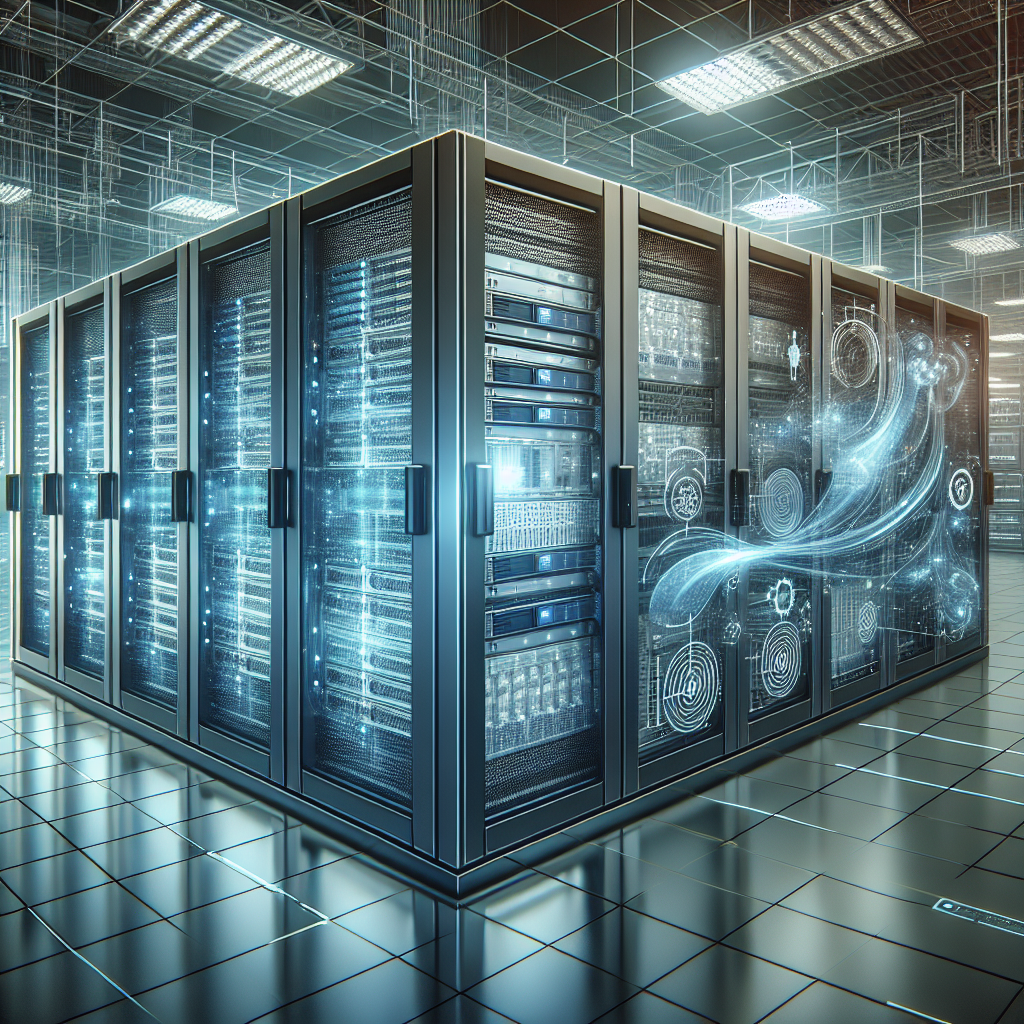
Advancements in Data Center Cooling Technology: What You Need to Know
Data centers are the backbone of modern technology, housing the servers and equipment that power the digital world we live in. As the demand for data processing and storage continues to grow, so does the need for efficient cooling solutions to keep these facilities running smoothly. In recent years, there have been significant advancements in data center cooling technology that are revolutionizing the way these facilities are operated. Here’s what you need to know about the latest developments in data center cooling.One of the most significant advancements in data center cooling technology is the use of liquid cooling systems. Traditional air-cooled data centers rely on large air conditioning units to keep the equipment at optimal operating temperatures. However, liquid cooling systems are much more efficient and can remove heat more effectively than air-based solutions. These systems involve circulating liquid coolant through a network of pipes and heat exchangers to absorb and dissipate heat from the servers. Liquid cooling systems can help reduce energy consumption and lower operating costs for data center operators.
Another key development in data center cooling technology is the use of intelligent cooling management systems. These systems use advanced sensors and algorithms to monitor and control the temperature and airflow within the data center. By analyzing real-time data and adjusting cooling settings accordingly, these systems can optimize cooling efficiency and prevent hot spots from forming. Intelligent cooling management systems can also help data center operators identify areas of inefficiency and make proactive adjustments to improve overall cooling performance.
In addition to liquid cooling systems and intelligent cooling management, data center operators are also exploring alternative cooling solutions such as direct free cooling and evaporative cooling. Direct free cooling involves using outside air to cool the data center, reducing the reliance on mechanical cooling systems. Evaporative cooling systems use water evaporation to remove heat from the servers, offering a more energy-efficient cooling solution compared to traditional air conditioning units.
Overall, the advancements in data center cooling technology are helping to improve the efficiency and sustainability of these facilities. By adopting innovative cooling solutions such as liquid cooling systems, intelligent cooling management, and alternative cooling methods, data center operators can reduce energy consumption, lower operating costs, and minimize their environmental impact. As the demand for data processing continues to grow, it is essential for data center operators to stay informed about the latest developments in cooling technology to ensure their facilities remain efficient and reliable.

The Future of Data Center Cabling: Innovations and Advancements on the Horizon
As technology continues to advance at a rapid pace, so too does the need for efficient and reliable data center cabling. The future of data center cabling is shaping up to be one filled with innovations and advancements that promise to revolutionize the way data is transmitted and processed.One of the key trends in data center cabling is the move towards higher speeds and greater bandwidth. With the increasing demand for data-intensive applications such as virtual reality, artificial intelligence, and Internet of Things devices, data centers need to be able to handle larger volumes of data at faster speeds. This has led to the development of new cabling standards such as Category 8 Ethernet, which can support data transfer speeds of up to 40 gigabits per second over copper cabling.
Another important development in data center cabling is the move towards greater flexibility and scalability. Traditional cabling systems can be cumbersome and difficult to manage, especially in large data center environments. New innovations such as modular cabling systems and pre-terminated cabling solutions are making it easier for data center operators to quickly and easily deploy and expand their cabling infrastructure as needed.
In addition to speed and flexibility, the future of data center cabling is also focused on improving reliability and reducing downtime. Advances in cable management and labeling systems, as well as the use of intelligent cable management software, are helping data center operators to better organize and manage their cabling infrastructure, reducing the risk of cable failures and downtime.
One of the most exciting developments in data center cabling is the rise of fiber-optic cabling technology. Fiber-optic cables are capable of transmitting data at speeds of up to 100 gigabits per second over long distances, making them ideal for connecting data centers located in different geographic locations. Fiber-optic cabling is also more immune to electromagnetic interference and crosstalk, making it a more reliable option for high-speed data transmission.
Overall, the future of data center cabling is one filled with promise and potential. With innovations such as higher-speed Ethernet standards, modular cabling systems, and fiber-optic technology, data center operators can look forward to a future where their cabling infrastructure is faster, more flexible, and more reliable than ever before. By staying abreast of the latest developments in data center cabling technology, organizations can ensure that their data centers are equipped to handle the demands of tomorrow’s data-driven world.
